Modern day marketing is dependent heavily on sending the correct message to the correct audience at the right time. In case of email marketing, a timely triggered email not only notifies the customer about the affirmation of the recently taken action, but also is unique for each customer.
In a triggered email an action from your subscriber satisfies the condition of a trigger and the corresponding email is sent to them in real-time. While Email Marketing Agencies regularly optimize welcome emails and other triggered emails, transactional emails are one set of triggered emails that are being optimally used only by 40% of marketers but has 8x the open & engagement rate of traditional emails (Source).
Transactional emails are generally post-purchase emails that serves as some form of purchase receipts like shipping confirmations, invoices and receipts. Other forms of transactional emails include password resets, privacy policy update, or membership updates are not associated with any purchases but to alert the subscriber on user-end activity. Since transactional emails are sent when the customer performs an activity, the customer expects them, and so transactional emails have highest open rates. Sending transactional emails have additional advantages as stated below:
Builds Trust – Subscribers love getting receipt of their transactions online. But including things they may need like a contact email address or phone number, shipment tracking links and social media buttons, aids them to connect with you better.
Improves Customer Engagement – Since most of the transactional emails adopt one-on-one approach, it helps customers feel valued and boosts interaction.
Creates Additional Sales – Cross-selling by adding photos and descriptions of recent purchase alongside ads for similar products or related products, instills a desire to makes further purchases.
Boosts Brand Recognition – Incorporate brand colors and logo in your emails while ensuring that an order confirmation followed by a shipping notice and final warranty message carry your brand message flawlessly.
Interested in being a part of the 40% of the marketers who optimally use transactional emails? Here are few tips to improve conversions using transactional emails.
Confirmation emails are sent to the customers to notify them of the successful approval of their action. It can be split into 3 different types
a. Account creation confirmation email
Different from welcome emails, account confirmation emails or double opt-in emails are sent to confirm the email address when the customer subscribes or registers, thereby verifying the email address. When a subscriber confirms the subscription via emails, it implies that they are genuinely interested to remain updated with ongoing of your brand.
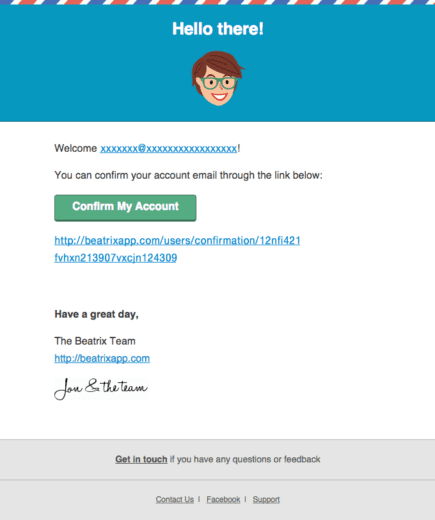
Scope of improvement: When someone subscribes, they have limited knowledge about the brand, add a link for them to get in touch for any questions or feedback as shown in above example.
B. Profile change confirmation email
Whenever the customer makes change in their online profile, an email is sent to them affirmation of the changes they made. This way, your customer remains informed and aware of the changes. In the below email by Spotify, they struck a conversational tone with a formal introduction followed by the changes made. Additionally, they provided a link for reporting account breach.

Scope of improvement: Provide value addition. Spotify included links for application for different devices. Even if you are not cross-selling, include links to other products for your customers to check out.
C. Order Confirmation emails
Your customer makes a purchase. Congratulations! That’s a sale. A timely order confirmation email sent moments after the customer has completed the purchase, informs them about their product being placed. Order confirmation email can also double up as purchase receipt as shown below in the email by Chewy.
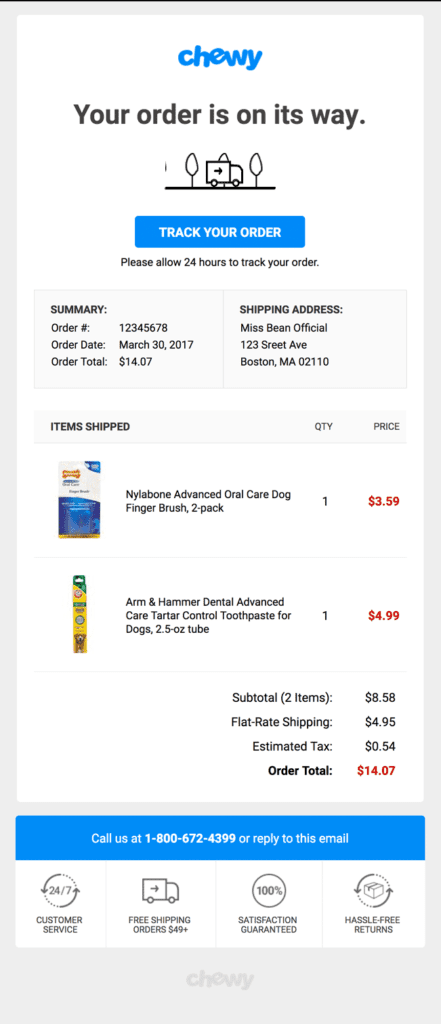
Scope of improvement: You can also add a link for live tracking of the order. This way the customer finds it easy for following up on their order.
To err is to human and in the modern world of multiple credentials, it is easy to forget an email. When a customer requests to change their password, a password reset email is immediately sent. Use casual tone in your email copy along with the link to reset the password.
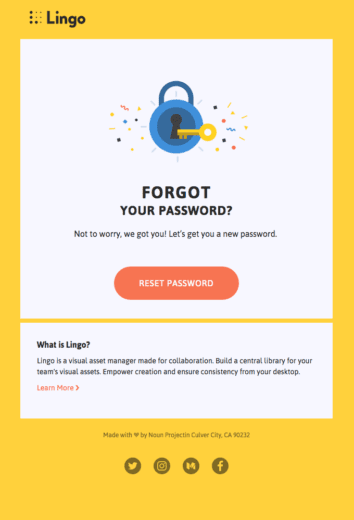
Scope of improvement: From the phishing point of view, it is advisable to add a link to deactivate the password request as done by BitPay in the below email.
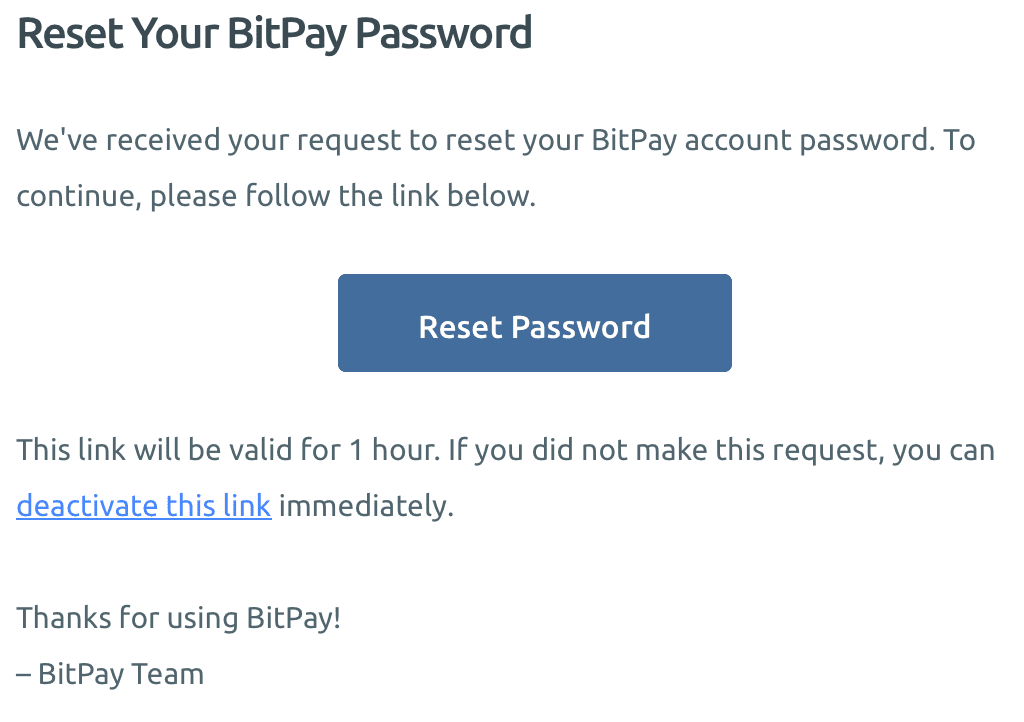
[insert page='how-to-nurture-your-ppc-leads-with-email-marketing' display='single-related-article-02.php']
Once an order is delivered to your customer, a feedback email can be timed to be sent after few days in order to collect the review of the customer after using your product. This way you gain precious information on how helpful your product was to them and can be featured in the testimonials for additional trust building. Always thank your customers and inform them how their review can help you grow as shown in the email below by Shopify.

You can also specify that taking the survey will only short time as shown below in the email by Airbnb.

Scope of improvement: Airbnb created urgency in their email by offering an incentive in exchange for the review and setting a deadline to it.
Reminder emails such as re-engagement, cart abandonment or subscription renewal emails serve to remind the customer about certain action pending from their side.
[insert page='design-a-winning-email-cheatsheet' display='single-ebook-promotion.php']
A. Cart abandonment email
A customer puts products to their online cart and abandons the purchase process mid-way owing to different reasons. By sending a timely reminder in form of a cart abandonment email, there is 37.8% chance of the customer to return to their cart and complete the purchase, according to Baymard Institute. In the email below, UnderArmor offers free shipping for the product along with the image of the abandoned product.
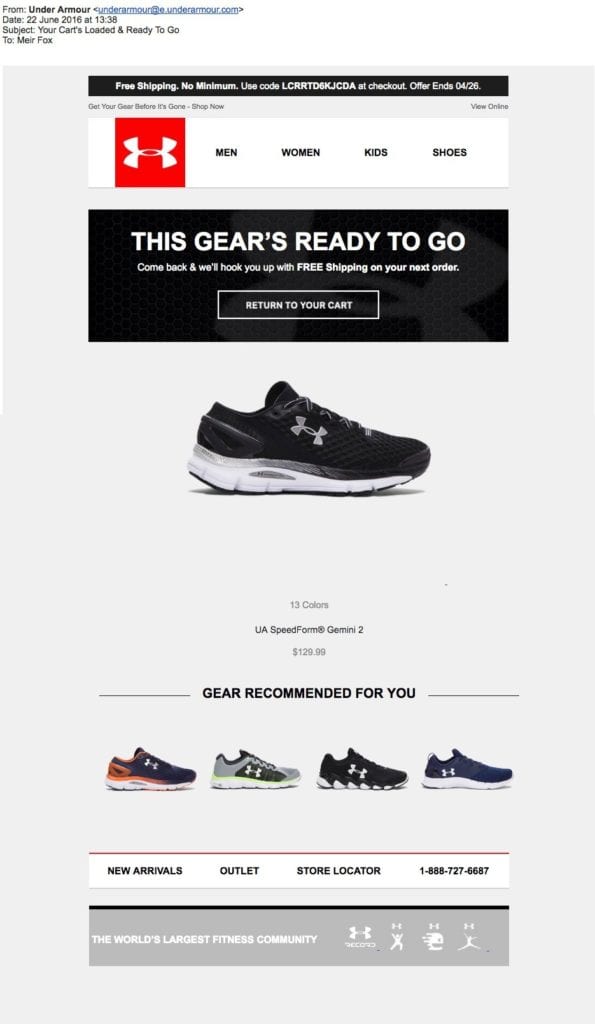
Scope of improvement: Make use of recommendation engine to suggest alternates to the abandoned products to offer choice.
B. Re-engagement emails
The engagement rate of any customer would decay over time. Target your inactive and dormant customers who haven’t open ‘x’ number of emails, with a re-engagement email at a strategic time to lure them back. This is important as returning customers spend 67% more than new customers. In the email below by Animoto, the headline and sub-heading are strong enough to motivate the subscriber to act.
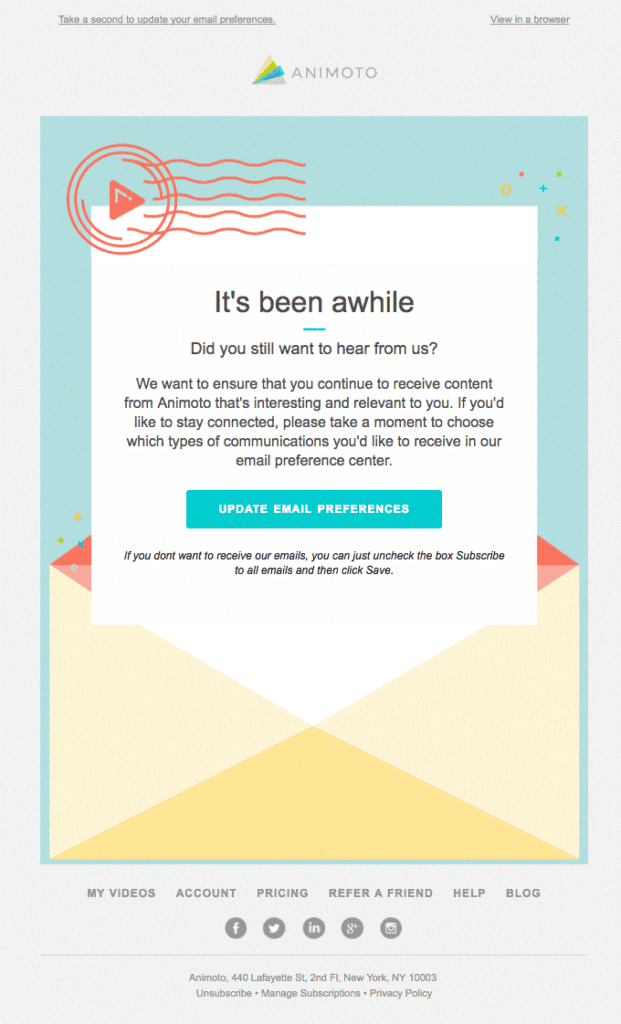
Scope of improvement: Time change; preferences change. Suggest your customers to update their preferences in case they still wish to remain subscribed.
C. Subscription renewal emails
Someone registered for a limited day trial or yearly subscription of your product and when you gently remind them few days before the subscription ends, you motivate them to register and continue using the features. In the below email by Birchbox, they have motivated their customers by showing what they stand to get when they continue their subscription.
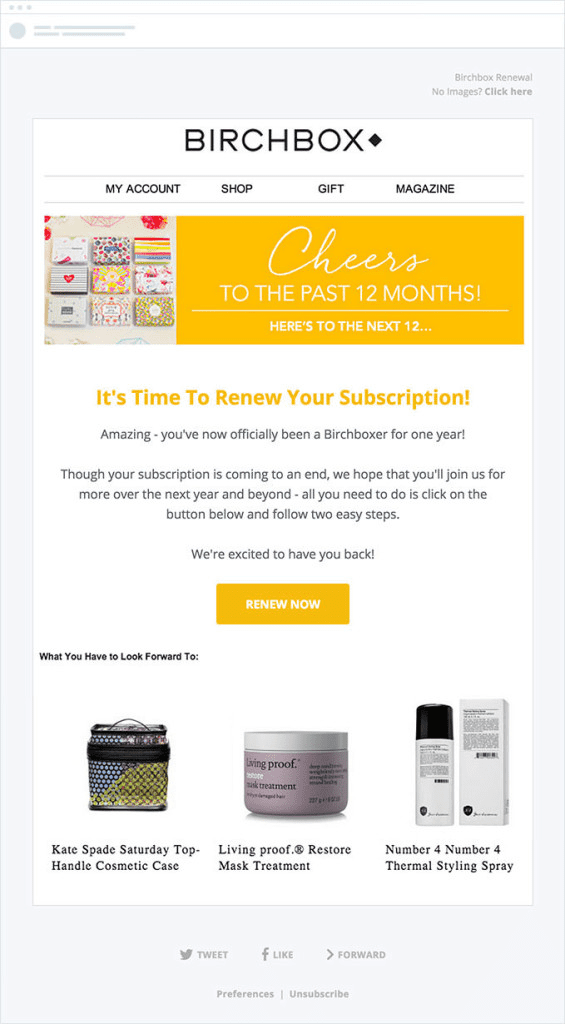
Scope of improvement: Before renewing their subscription, your customer may have query so, like we suggested for welcome emails, add a link for your customer support to answer any query they may have as shown in the email below by SquareSpace.
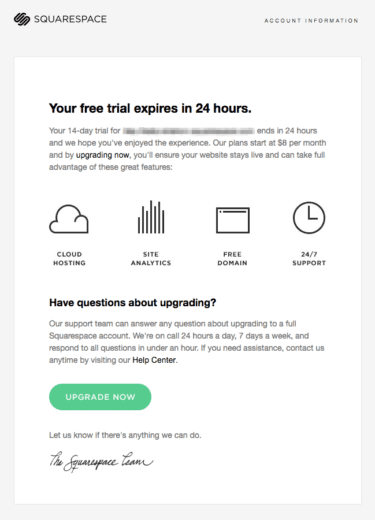
No matter what type of transactional emails you send as a part of your Email Marketing Services, what needs to be kept in mind is the fact that timed and personalized information is a must. When used optimally, transactional emails are a great potential in generating revenue, building brand loyalty and improving email deliverability.